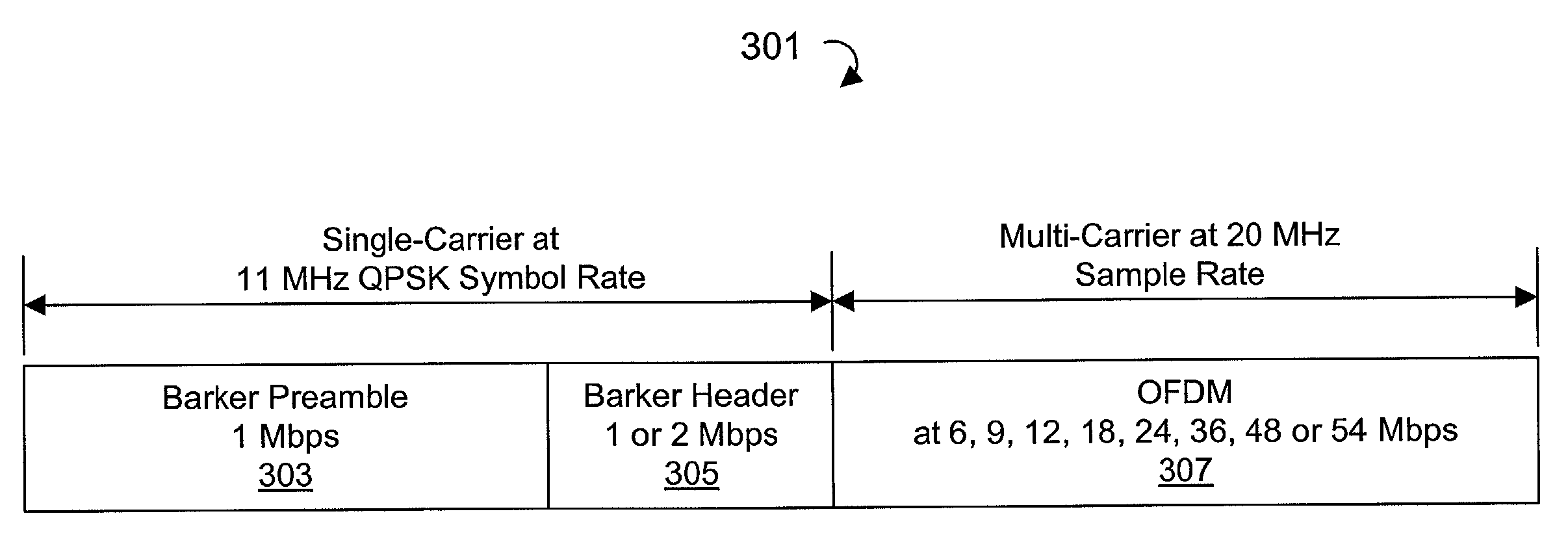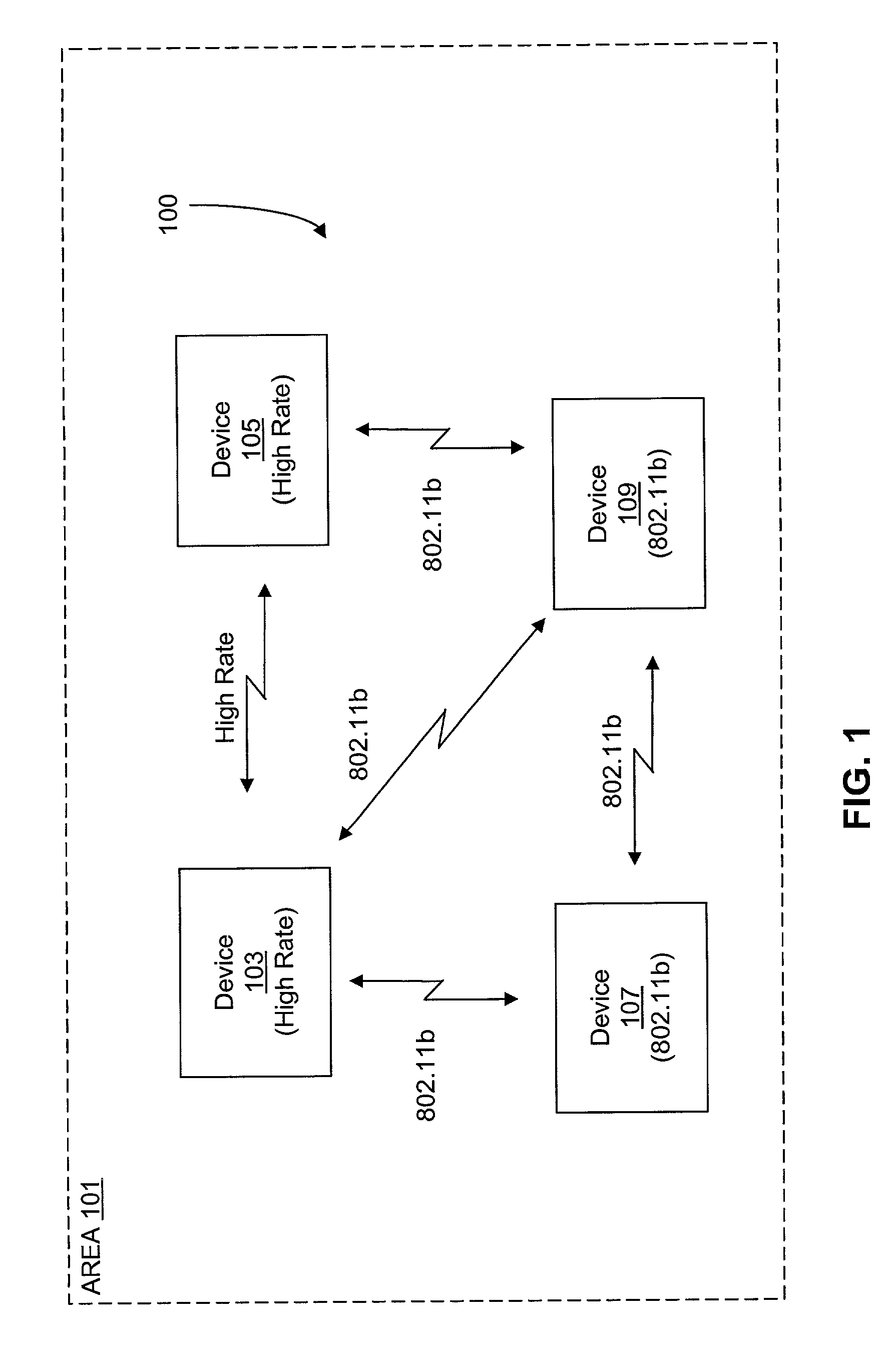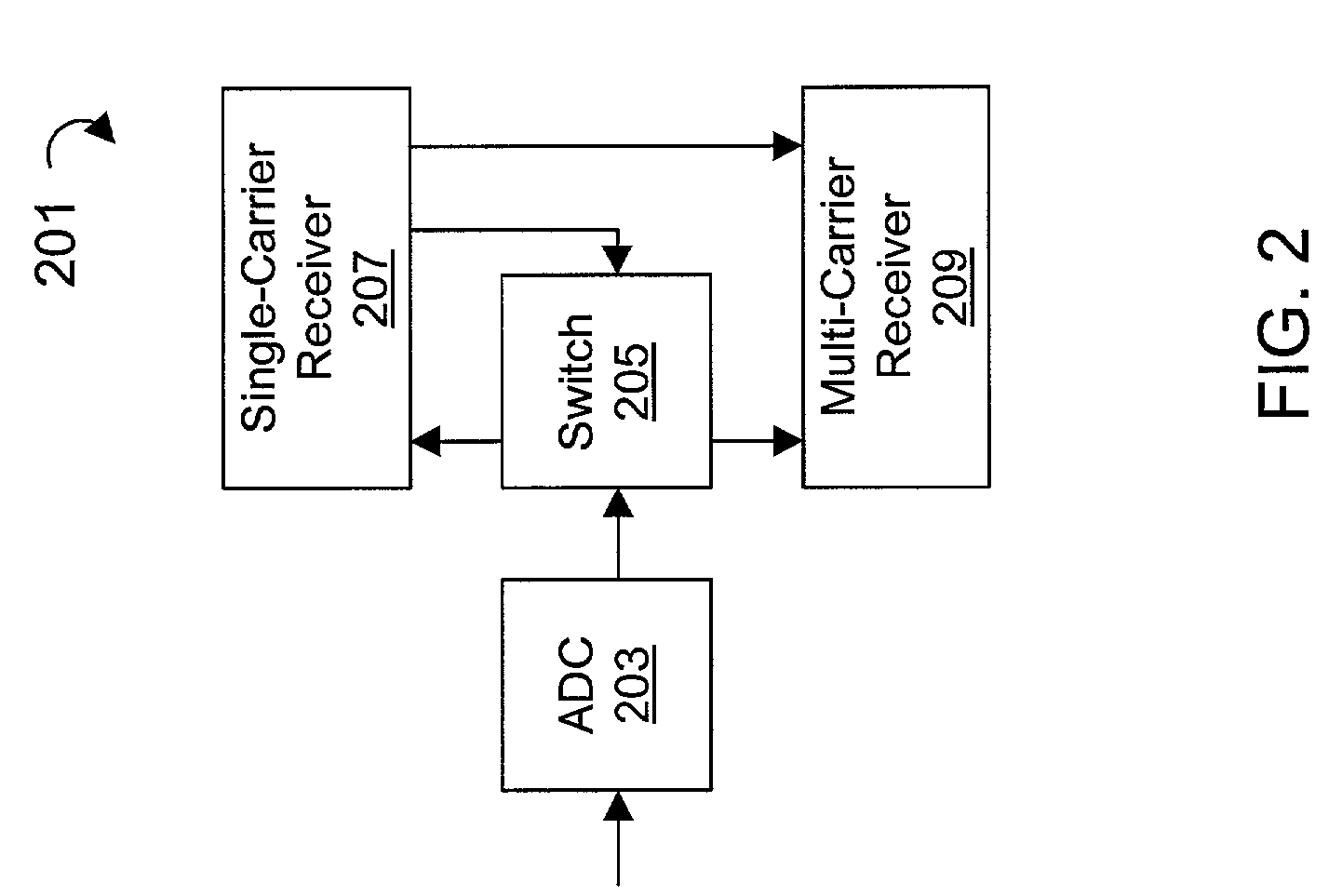Mixed waveform configuration for wireless communications
a wireless communication and mixed waveform technology, applied in the field of wireless communication, can solve the problems of incompatibility and inability to work together of systems implemented according to the 802.11a and 802.11b standards, multi-path distortion of wireless communications, and impairment of wireless communications, including wlans, etc., and achieve the effect of reducing complexity
- Summary
- Abstract
- Description
- Claims
- Application Information
AI Technical Summary
Benefits of technology
Problems solved by technology
Method used
Image
Examples
Embodiment Construction
[0044]A configuration according to the present invention reuses the equalizer information obtained during acquisition of the single-carrier portion of the signal. In this manner, no OFDM preamble is required, although it still may be present for both convenience and fine tuning. The present disclosure describes a technique for providing complete continuity between the single-carrier and OFDM (multi-carrier) segments. This continuity is provided by specifying the transmit waveform completely for both the single-carrier and OFDM segments and specifying the transition. This enables complete continuity between the two signal segments, including AGC (power), carrier phase, carrier frequency, timing and spectrum (multi-path). In this manner, the signal does not have to be reacquired by the multi-path portion of the receiver since the information developed during the single-carrier portion (preamble / header) is valid and used to initiate capture of the multi-carrier portion. Maintaining and...
PUM
 Login to View More
Login to View More Abstract
Description
Claims
Application Information
 Login to View More
Login to View More - R&D
- Intellectual Property
- Life Sciences
- Materials
- Tech Scout
- Unparalleled Data Quality
- Higher Quality Content
- 60% Fewer Hallucinations
Browse by: Latest US Patents, China's latest patents, Technical Efficacy Thesaurus, Application Domain, Technology Topic, Popular Technical Reports.
© 2025 PatSnap. All rights reserved.Legal|Privacy policy|Modern Slavery Act Transparency Statement|Sitemap|About US| Contact US: help@patsnap.com



